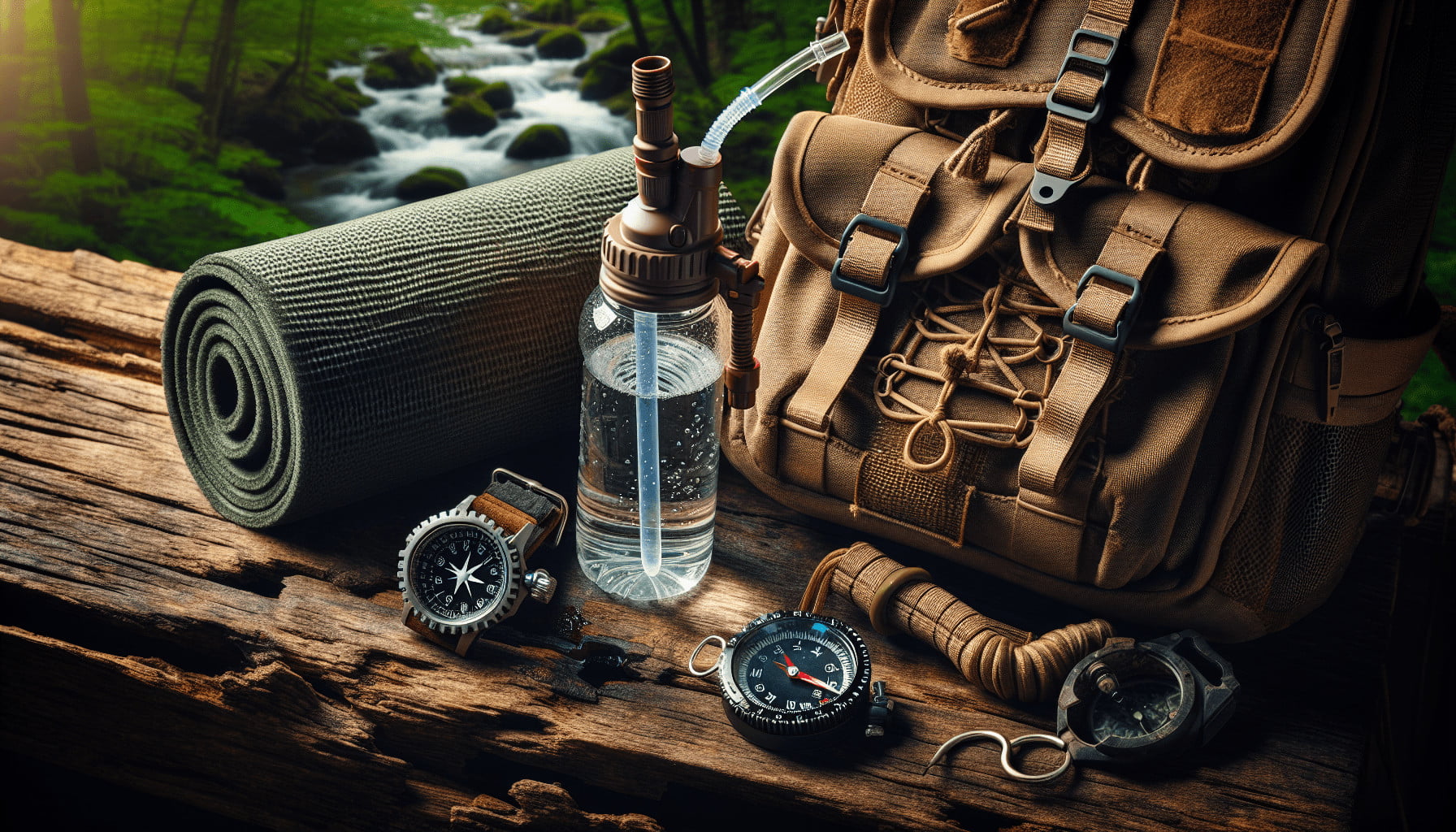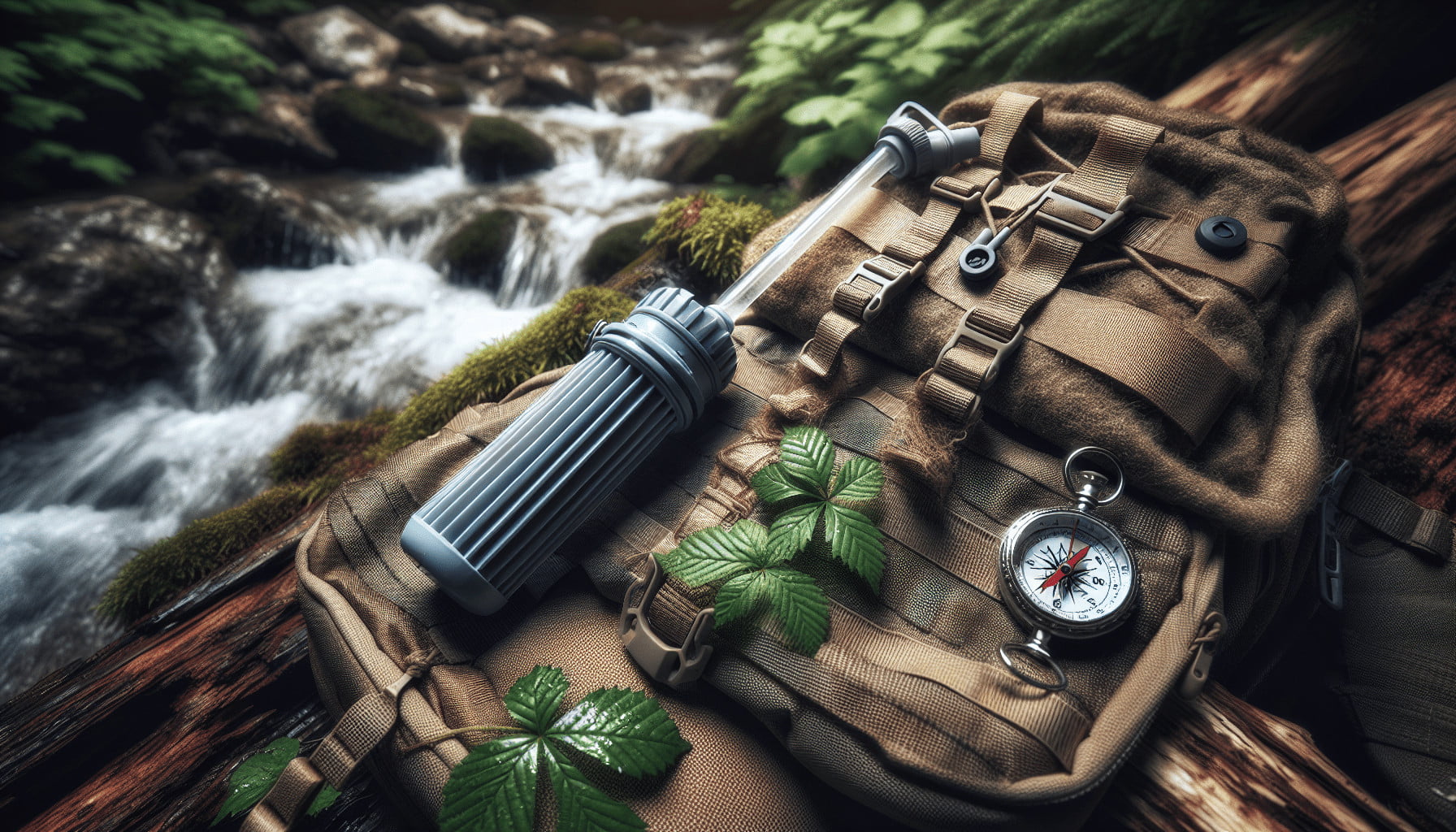Have you ever considered how vital access to clean and safe drinking water is during an emergency? Maintaining a secure supply of potable water is crucial when conventional sources may be compromised. Understanding various water purification methods can be a game-changer in such scenarios. By equipping yourself with the appropriate knowledge, you ensure preparedness and safeguard your health and well-being.
Boiling
Boiling water is one of the oldest and most reliable methods of purification. It’s effective in killing bacteria, viruses, and parasites that can cause illness.
How to Boil Water for Purification
To purify water by boiling, bring it to a rolling boil for at least one minute. If you are at an altitude above 6,500 feet (2,000 meters), boil the water for at least three minutes. Once boiled, let the water cool before consumption.
Pros and Cons of Boiling
| Pros | Cons |
|---|---|
| Simple and easy | Requires fuel and equipment |
| Kills most pathogens | Doesn’t remove chemicals or debris |
| No special equipment required | Time-consuming |
Boiling is remarkably effective because it raises the temperature of water to a level that harmful microorganisms cannot survive.
Chemical Disinfection
Chemical disinfection involves using chlorine or iodine to kill pathogens present in the water. This method is portable and can be done quickly, making it suitable for emergency situations.
Using Chlorine for Water Purification
Chlorine tablets or liquid can be used to disinfect water. Simply add the recommended amount to the water, stir well, and let it sit for at least 30 minutes before drinking. The chlorine will kill many types of bacteria and viruses, although it may not be effective against some parasites.
Using Iodine for Water Purification
Iodine tincture, tablets, or crystals can be used similarly to chlorine. Add the iodine to the water, stir, and let it sit for at least 30 minutes. Note that iodine should not be used for long-term purification, as prolonged exposure can be harmful.
Pros and Cons of Chemical Disinfection
| Pros | Cons |
|---|---|
| Portable and lightweight | May leave an aftertaste |
| Quick to implement | Not effective against all pathogens |
| Effective in clear water | Potential health risks with long-term use |
Chemical disinfection is handy and quick, though understanding its limitations and potential health risks is essential.
Filtration
Filtration is a method that removes impurities by trapping them in a material like activated charcoal, ceramic, or membrane filters.
Types of Water Filters
- Portable Filters: Ideal for small quantities of water, these are great for hiking, camping, or short-term emergencies.
- Pump Filters: Require manual effort but can filter large amounts of water relatively quickly.
- Gravity Filters: Work without much manual effort. Pour water into the top, and gravity pulls it through the filter into a clean container below.
- Inline Filters: Attach directly to hydration bladders or bottles and filter water as it’s consumed.
Choosing a Filter
When selecting a water filter, consider the following criteria:
- Pore Size: Smaller pores remove more contaminants.
- Flow Rate: How quickly you get drinkable water.
- Capacity: How much water it can filter before needing replacement.
- Weight and Portability: Especially important for backpacking and emergency kits.
Pros and Cons of Filtration
| Pros | Cons |
|---|---|
| Removes sediment and parasites | Requires maintenance |
| Improves taste and odor | Doesn’t remove viruses |
| Various sizes and capacities | Some require physical effort |
Filtration offers versatility and effectiveness, particularly for removing physical contaminants and improving the water’s taste. However, it often requires maintenance and doesn’t always eliminate viruses.

Ultraviolet (UV) Purification
UV purification involves using ultraviolet light to kill microorganisms in the water. This method is effective but relies on battery-powered devices.
How UV Purification Works
A UV purifier emits UV-C light, which disrupts the DNA of bacteria, viruses, and protozoa, rendering them harmless. Simply submerge the device in the water and let it operate for the recommended amount of time, usually around 90 seconds for a liter.
Pros and Cons of UV Purification
| Pros | Cons |
|---|---|
| Effective against most pathogens | Requires batteries or power source |
| Quick and easy | Doesn’t remove chemicals or debris |
| No taste or odor alteration | Less effective in cloudy water |
UV purification is cutting-edge and highly effective, though reliance on power sources and its ineffectiveness in murky water can be problematic.
Distillation
Distillation turns water into steam and then condenses it back into liquid form, effectively removing most impurities, including heavy metals, salts, and microorganisms.
How to Distill Water
- Boil: Heat water until it turns into steam.
- Condense: Capture the steam and allow it to cool back into liquid form.
- Collect: Gather the distilled water in a clean container.
Pros and Cons of Distillation
| Pros | Cons |
|---|---|
| Removes a wide range of contaminants | Requires significant time and energy |
| Effective for saltwater | Bulky and less portable |
| Produces very pure water | Doesn’t remove volatile chemicals |
Distillation produces some of the purest water possible, effectively dealing with a vast array of contaminants. However, it is time-consuming and typically requires substantial equipment.
Activated Carbon
Activated carbon works by adsorbing contaminants onto its surface, effectively removing chlorine, volatile organic compounds (VOCs), and unpleasant tastes and odors.
Using Activated Carbon Filters
Activated carbon filters can be used as standalone devices or as part of larger filtration systems. They efficiently trap certain chemicals and improve the water’s flavor, making it more enjoyable to drink.
Pros and Cons of Activated Carbon
| Pros | Cons |
|---|---|
| Improves water taste and odor | Limited lifespan |
| Reduces chlorine and some chemicals | Doesn’t remove all pathogens |
| Usually affordable and easy to use | Needs replacement regularly |
Activated carbon filters are excellent for enhancing water quality but should be part of a broader purification strategy to ensure water safety.

Solar Purification (SODIS)
Solar Disinfection (SODIS) utilizes sunlight to purify water, making it an accessible, low-tech method ideal for certain situations.
How SODIS Works
Fill a clear plastic or glass bottle with water and leave it in direct sunlight for at least six hours (or two days if the weather is cloudy). The UV rays from the sun kill or deactivate harmful microorganisms.
Pros and Cons of SODIS
| Pros | Cons |
|---|---|
| Uses renewable energy (sunlight) | Requires clear, sunny weather |
| No cost beyond initial setup | Slow process – takes several hours |
| No taste or odor alteration | Less effective in cloudy or polluted water |
SODIS is a simple and environmentally friendly method but comes with limitations based on weather conditions and water quality.
Ceramic Filters
Ceramic filters use small pore sizes to filter out bacteria and protozoa from the water. They are highly effective at removing larger pathogens and particulate matter.
Using Ceramic Filters
Water passes through a ceramic cartridge, which traps contaminants. These filters are often part of a larger system and may include activated carbon for additional purification.
Pros and Cons of Ceramic Filters
| Pros | Cons |
|---|---|
| Effective against bacteria and protozoa | Doesn’t remove viruses |
| Durable and reusable | Can be slow |
| Often combined with other technologies | Requires regular cleaning |
Ceramic filters offer robust filtration and can be cleaned and reused, making them a durable option in your emergency preparedness arsenal.
Reverse Osmosis
Reverse Osmosis (RO) systems use a semipermeable membrane to remove a wide range of contaminants from water, including dissolved salts, bacteria, and viruses.
How Reverse Osmosis Works
Water is forced through a semipermeable membrane that blocks contaminants but lets clean water pass through. Various stages of pre-filters and post-filters enhance the purification process.
Pros and Cons of Reverse Osmosis
| Pros | Cons |
|---|---|
| Removes a wide range of contaminants | Requires high pressure and energy |
| Produces very pure water | Bulky and less portable |
| Often includes multiple filtration stages | Can be expensive and requires maintenance |
RO systems deliver exceptionally pure water but are more suited to stationary setups due to their size and energy requirements.
Miox Systems
Miox, or Mixed Oxidant, systems generate a disinfectant solution by mixing salt and water with a small electric charge. This solution is then added to the water to kill pathogens.
How to Use Miox Systems
The device generates the disinfectant, which is mixed into the contaminated water. After a specified contact time, usually around 30 minutes, the water is safe to drink.
Pros and Cons of Miox Systems
| Pros | Cons |
|---|---|
| Effective against a wide range of pathogens | Requires batteries or electricity |
| Portable and lightweight | May leave a slight taste |
| Generates disinfectant on-demand | Less effective in very turbid water |
Miox systems provide a versatile and portable option for emergency water purification, effectively tackling many common pathogens.
Bleach
Bleach, or sodium hypochlorite, can be used as a makeshift water disinfectant in emergency scenarios. It’s a common household item that can serve as a last resort.
How to Use Bleach for Purification
Add 8 drops of unscented household bleach (5-6% concentration) per gallon of water. Stir well and let it stand for 30 minutes. If the water remains cloudy or has an odor, repeat the process.
Pros and Cons of Bleach
| Pros | Cons |
|---|---|
| Widely available | Not effective against all contaminants |
| Easy to use | Potentially harmful if misused |
| Fast acting | Leaves a chlorine taste |
While not a first-choice method, bleach can quickly disinfect water, though caution is essential regarding its potential health risks.
Comparison of Methods
Comparing the various methods can help determine the best approach based on specific needs and circumstances.
| Method | Effectiveness | Use Case | Portability | Speed | Cost |
|---|---|---|---|---|---|
| Boiling | High | General purification | Low | Slow | Low |
| Chemical | Moderate | Emergency kits | High | Fast | Low |
| Filtration | High | Backpacking, home use | Varies | Varies | Varies |
| UV | High | Portable, small groups | High | Fast | High |
| Distillation | Very High | Removing all contaminants | Low | Slow | High |
| Activated Carbon | Moderate | Improving taste, removing chemicals | High | Fast | Moderate |
| SODIS | Moderate | Low-resource areas | High | Slow | Low |
| Ceramic | High | Long-term, reusable | Moderate | Slow | Moderate |
| Reverse Osmosis | Very High | Home systems | Low | Varies | High |
| Miox | High | Portable, varied conditions | High | Fast | Moderate |
| Bleach | Moderate | Emergency reserve | High | Fast | Low |
Conclusion
Preparing for emergencies means making informed decisions about how you will ensure access to clean drinking water. Each purification method has its strengths and weaknesses, suited to different situations and requirements. By understanding and mastering these water purification methods, you can confidently handle emergencies and sustain health and safety for you and your loved ones.
